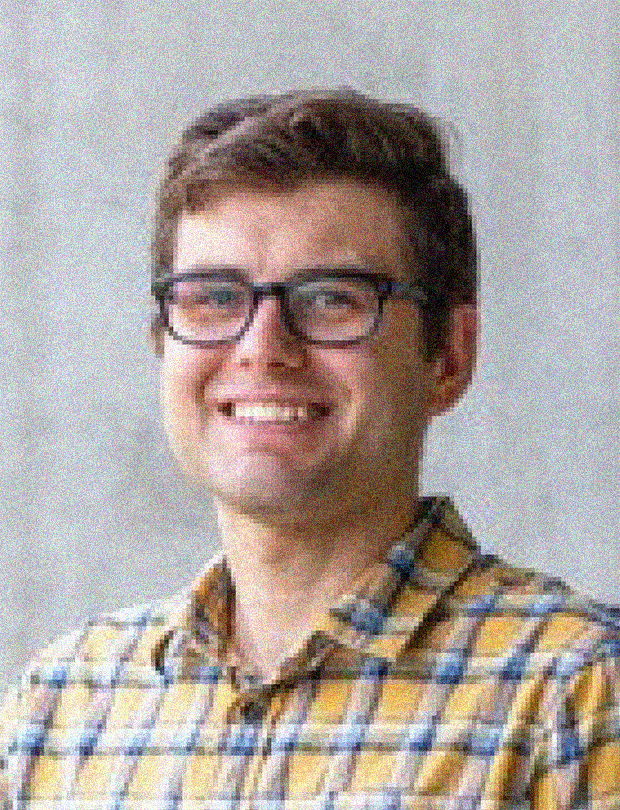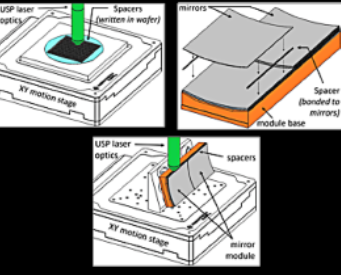
Brandon Chalifoux
Assistant Professor
Education
- Ph.D. (2019) • Mechanical Engineering • Massachusetts Institute of Technology
- M.S. (2014) • Mechanical Engineering • Massachusetts Institute of Technology
- B.S. (2008) • Mechanical Engineering • Rice University
Current Position
- Assistant Professor of Optical Sciences
- Assistant Professor of Aerospace and Mechanical Engineering James C. Wyant College of Optical Sciences
- University of Arizona, Tucson, AZ
- Directs the Lightweight Optics Lab and teaches optomechanical engineering courses.

(All) Three panels illustrate our process for fabricating X-ray mirror stacks and adjusting their alignment to meet nanometer alignment tolerances.
(upper left) An ultrafast laser optical system writes patterns in a glass wafer by firing the laser as a motion stage translates the wafer along a specified trajectory.
(upper right) Spacers and mirrors are assembled to make stacks of X-ray telescope mirrors. The stacks are composed of at 6 or more curved mirrors, concave side up.
(lower) A stack is mounted on its side on a precision motion stage, with an ultrafast laser focusing into the spacers that separate the X-ray mirrors. The stage translates the mirror stack along a specified trajectory and the laser is fired into the spacer at specified locations to create strain and adjust alignment of the mirrors.
Technology Interests
- High-resolution X-ray optics
- Ultraprecision optomechanical system engineering
- Precision metrology
- Micro- to macro-scale strain engineering
- Novel techniques in ultrafast laser-based materials processing
Goals and Aspirations
- Advance astrophysics research capabilities through optomechanical technology development
- Create techniques to build extremely high-resolution, high-throughput space telescopes
- Build interconnected science and engineering teams to enable future scientific discovery
- Educate highly capable future scientists and engineers to strengthen the nation’s workforce





















